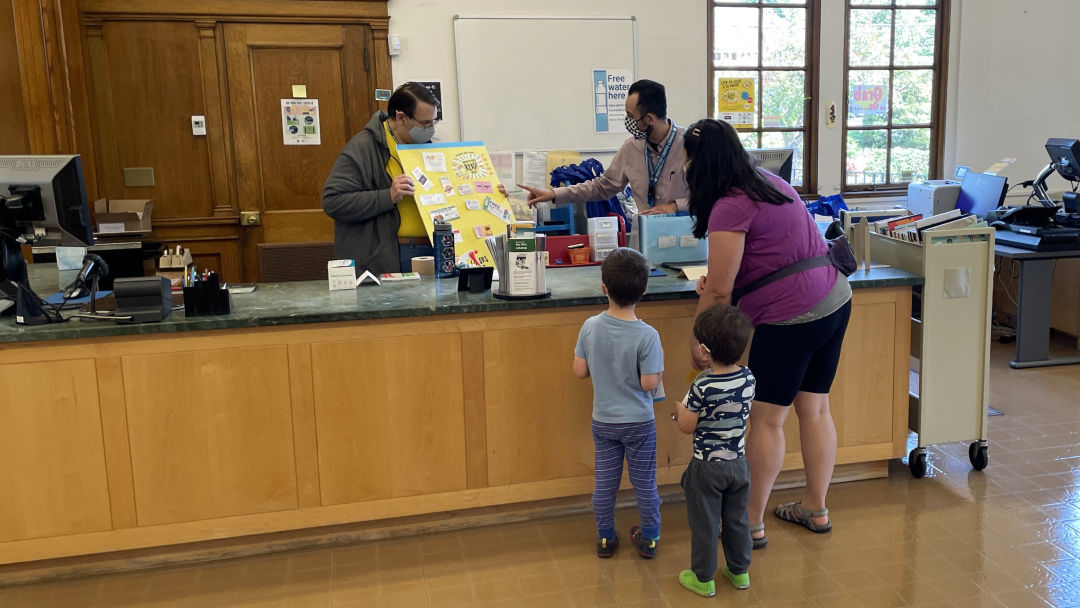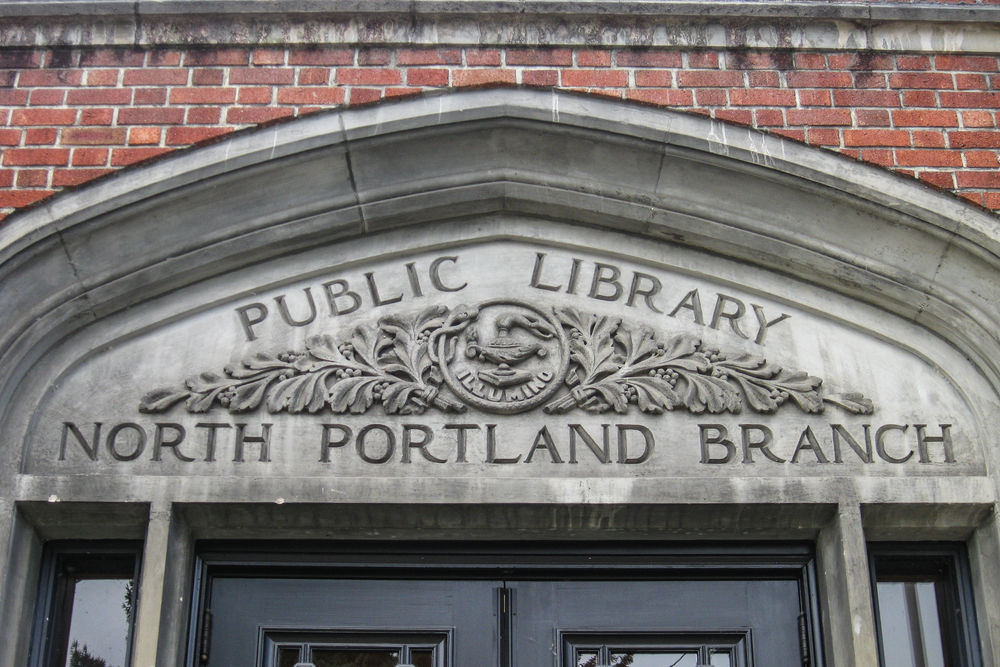Portland's Libraries Are Open Again, But in Person Events Are Slower to Return

Staff at the Albina Library in N. Portland helping out with summer reading.
Like the oft-agonizing wait for a hot bestseller to be available for check-out, Portland-area residents who’ve been itching for a return to a full slate of Multnomah County Library programming— from librarian-led story times and live homework help to drop-in tech troubleshooting—will need to cool their heels a little longer.
After more than two years of pandemic-disrupted services, many publicly funded institutions in the metro area are back to normal or getting close. School buildings, for example, have been open on regular hours since September, and schools are now again hosting community events, taking field trips, and allowing volunteers; the Portland City Council returned to in-person meetings this week. And many suburban area libraries, like those in neighboring Washington County, are already offering a mix of virtual and in-person programming to all age groups.
The Multnomah County library has taken a more deliberate approach, said Annie Lewis, the system’s Director of Community Services. Regular programming for ages 0-6, in particular, will remain almost entirely virtual until the fall, she says, though the intention is for some limited outdoor storytimes this summer at select libraries, assuming public health guidelines do not shift.
“After two years of virtual programs, we really want to build back in-person programs with an equity first perspective,” Lewis says. “We’re really focused on prioritizing programs for populations that have experienced oppression and marginalization. We have been more cautious with the birth to five population. The majority of our programming for youth during the summer, especially for birth to five, will continue to be virtual.”
In person programming will return in three phases. The first, already underway, allows for one-on-one help from a librarian with job searches or small business guidance, technology questions or tax assistance, available via appointment only.
Such services, Lewis says, have deliberately been prioritized for vaccine-eligible populations—which eliminates infants, toddlers and preschoolers under the age of 5.
In phase two, which is currently rolling out, the library is bringing back “a very small group of in-person events to specific locations—we are going to take this slow by looking at how those in person events go,” Lewis says. For example, there’s a Chinese calligraphy workshop on the calendar, and the Rockwood Library’s MakerSpace, which is geared towards tweens and teens, reopens next week and will be hosting coding and video creation camps in the coming months.
Librarians have also been making a concerted attempt to attend school and community events outside of library buildings, Lewis says, like last weekend’s “New Year in the Park” Southeast Asian cultural celebration at Glenhaven Park. A Juneteenth celebration is also in the works, hosted at the North Portland library branch.
The hurdle to restarting programming is not resources. The library has a secure funding stream via a dedicated property tax set-aside, of $1.22 for every $1,000 of assessed value on a home. But staffing, as in many industries, has been a challenge, Lewis says. The system has hired 134 people since August of 2021, but still has 41 vacancies, including eight in the youth and teen library division, who would be a part of designing in-person programming. Recruitment can be challenging, because those jobs require specialized degrees and also have cultural competency or bilingual hiring requirements attached.
Because the system is short-staffed, employees who might otherwise be leading or planning community events have been shifted to help make sure buildings stay open and accessible, Lewis says, a particular challenge during COVID surges when employees have had to call in sick themselves.
Another issue is space. On-site programming is usually in meeting rooms in library branches, but during the pandemic, those spaces were requisitioned for storage or staff work areas, in order to clear more space for social distancing in common areas. Transitioning those spaces back to their original purposes took months given the staff demand, Lewis says, though that process is now mostly complete.
Virtual programming has been popular for some library patrons, Lewis says, though the ability to make connections with other job-seekers, mystery lovers or families with babies when programming is online only is more limited.
The library has a wide variety of online and asynchronous programming—211 programs during the month of March 2022 alone, and there were more than 3,500 people who participated in them, Lewis says. (The population of Multnomah County is 815,428, per the 2020 census.)




